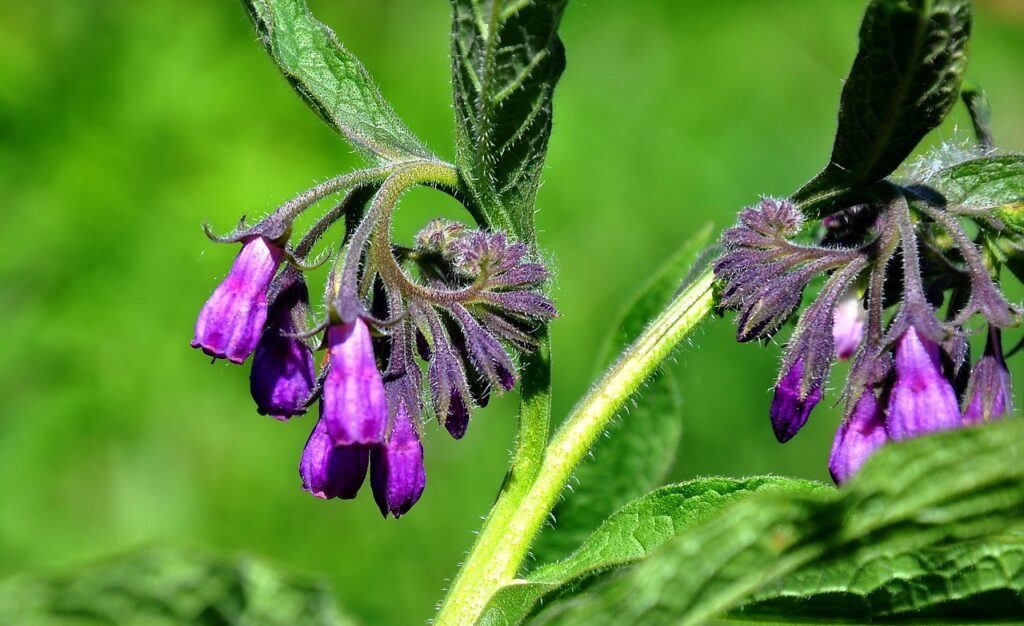
Pulverised leaves, mixed with hot water, were made into a poultice and applied to the body on breaks, wounds, sprains, burns, arthritis, etc. As a tea, it was used as a blood coagulant, often for menstrual pain, a treatment for ulcers and a treatment of maladies of the lungs. Historic uses of comfreyĪs its common name, “knitbone”, suggests, it was widely used in traditional medicine. It has been widely cultivated and used for nearly 2,500 years as a fertiliser, medicinal plant and as fodder. Originally from Asia and Europe, there are around 25 varieties, most are self-seeding. The plant has large, hairy leaves and pink, blue or white flowers in late spring. Each comfrey plant can grow up to 1.2 metres wide. It has a thick, expansive root system, with a large tap root which, in some varieties, will grow two or three metres into the soil.

In colder climates, it may disappear for the winter then come back to life again in Spring. What is comfrey?Ĭomfrey is a fast-growing, herbaceous perennial. So, what is it? What are the benefits to growing comfrey? What should those who grow it be aware of? Is it really worth the “trouble? This article will look at some of the pros and cons of growing comfrey and give you the basics to make a decision for yourself. It can be used in many ways, in the garden as fertiliser, mulch or as a weed suppressor or inhibitor as a compost activator, as fodder and in herbal remedies. However, it is some times referred to, by ‘permie’ ‘practitioners, as “ the permaculture plant”.

Comfrey (Symphytum officinale) Comfrey: weed or useful plant?Ĭomfrey is called a weed in many places.


 0 kommentar(er)
0 kommentar(er)
